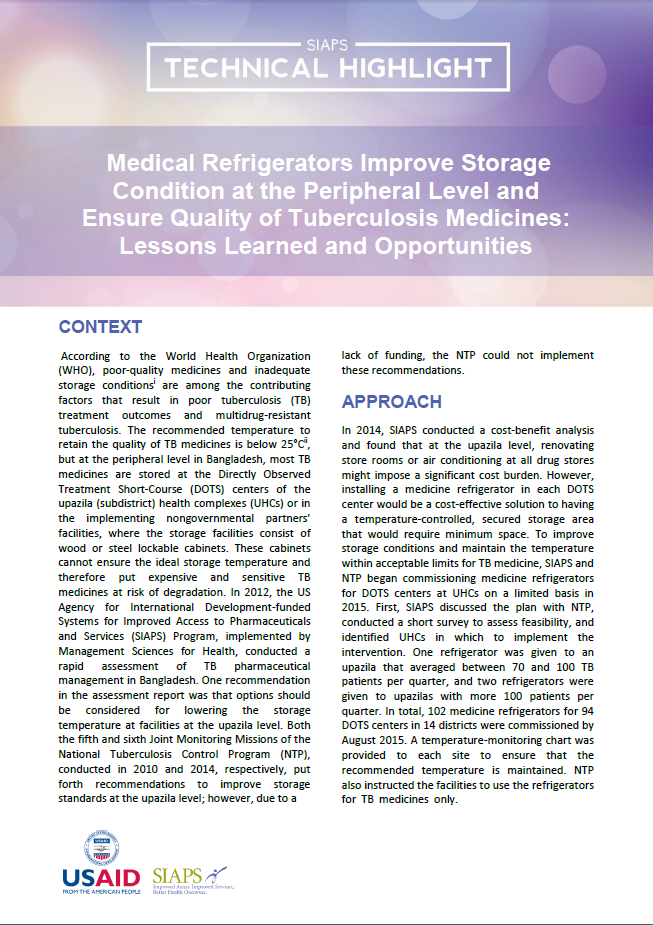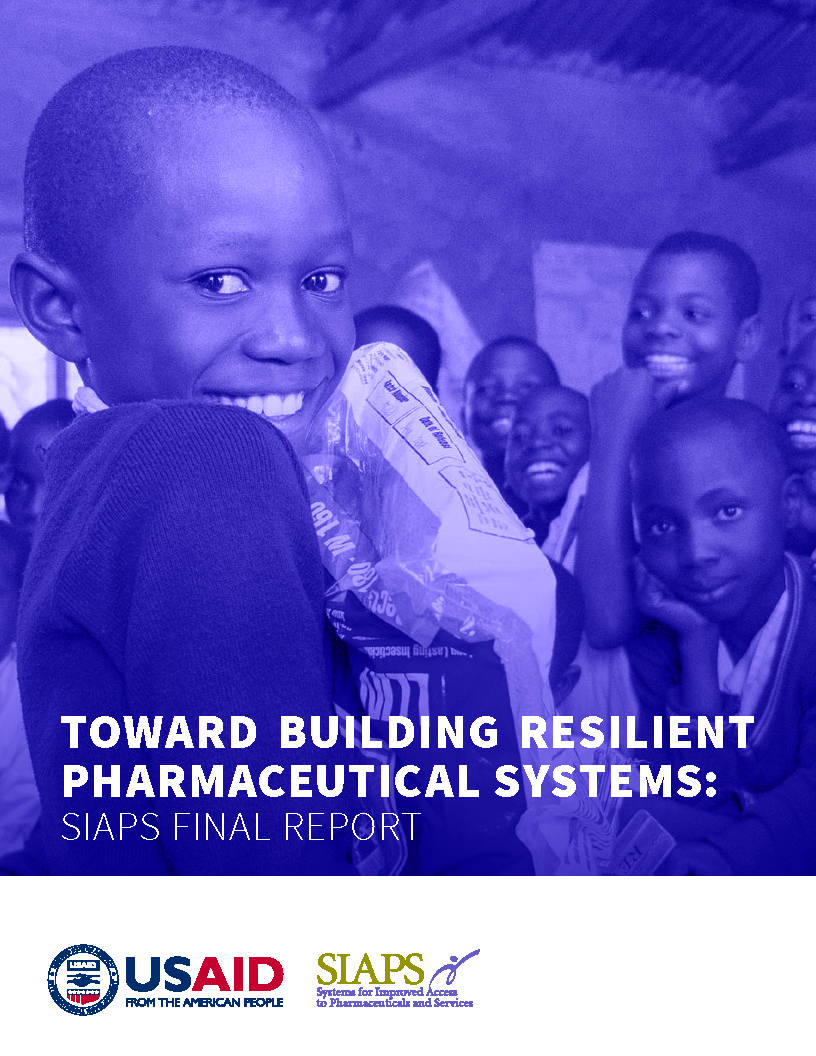
According to the World Health Organization (WHO), poor-quality medicines and inadequate storage conditions are among the contributing factors that result in poor tuberculosis (TB) treatment outcomes and multidrug-resistant tuberculosis. The recommended temperature to retain the quality of TB medicines is below 25°C, but at the peripheral level in Bangladesh, most TB medicines are stored at the Directly Observed Treatment Short-Course (DOTS) centers of the upazila (subdistrict) health complexes (UHCs) or in the implementing nongovernmental partners’ facilities, where the storage facilities consist of wood or steel lockable cabinets. These cabinets cannot ensure the ideal storage temperature and therefore put expensive and sensitive TB medicines at risk of degradation. In 2012, the US Agency for International Development-funded Systems for Improved Access to Pharmaceuticals and Services (SIAPS) Program, implemented by Management Sciences for Health, conducted a rapid assessment of TB pharmaceutical management in Bangladesh. One recommendation in the assessment report was that options should be considered for lowering the storage temperature at facilities at the upazila level. Both the fifth and sixth Joint Monitoring Missions of the National Tuberculosis Control Program (NTP), conducted in 2010 and 2014, respectively, put forth recommendations to improve storage standards at the upazila level; however, due to a lack of funding, the NTP could not implement these recommendations.


